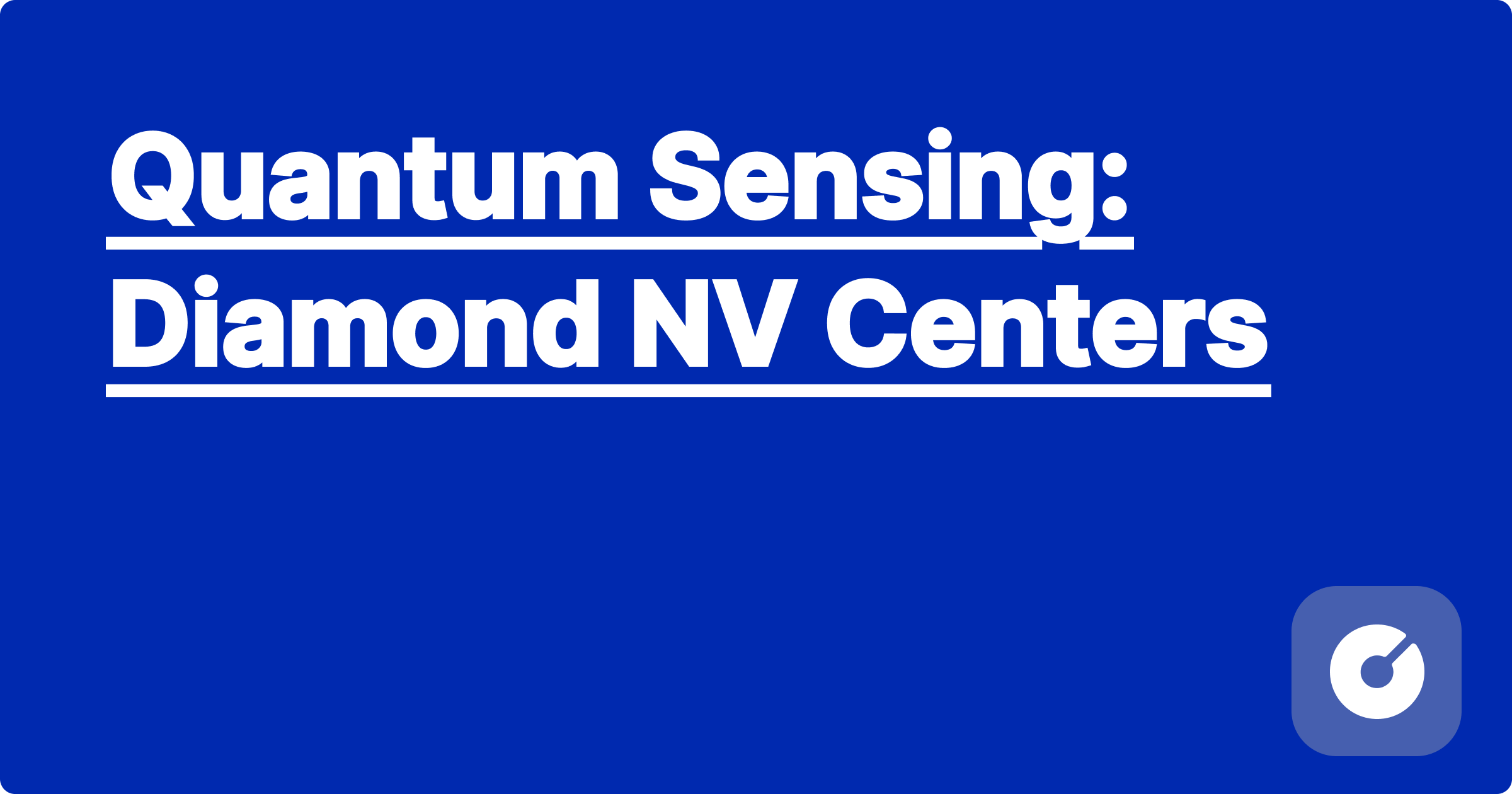
```html
Quantum Sensing: Diamond NV Centers
pre {
background-color: #f4f4f4;
padding: 10px;
overflow-x: auto;
}
.equation {
background-color: #f0f0f0;
padding: 10px;
border-radius: 5px;
}
.tip {
background-color: #e0ffe0;
padding: 10px;
border-radius: 5px;
margin-bottom: 10px;
}
.warning {
background-color: #fff2e0;
padding: 10px;
border-radius: 5px;
margin-bottom: 10px;
}
figure {
margin: 1em auto;
text-align: center;
}
figcaption {
text-align: center;
font-style: italic;
}
This blog post provides a comprehensive overview of quantum sensing using nitrogen-vacancy (NV) centers in diamond, targeting graduate students and researchers. We will delve into cutting-edge research, advanced technical details, practical implementations, and future directions. This material is intended to be immediately applicable to ongoing research projects.
Nitrogen-vacancy (NV) centers in diamond are point defects consisting of a substitutional nitrogen atom adjacent to a vacancy. Their unique spin properties, particularly the long coherence times even at room temperature, make them ideal for a wide range of quantum sensing applications. This includes magnetic field sensing, electric field sensing, temperature sensing, and even single-molecule detection.
The NV center's spin Hamiltonian describes its interaction with external fields and its internal dynamics. A simplified form is:
\( \mathcal{H} = D S_z^2 + g_e \mu_B \mathbf{B} \cdot \mathbf{S} + g_n \mu_N \mathbf{I} \cdot \mathbf{B} + A \mathbf{I} \cdot \mathbf{S} \)
Where D is the zero-field splitting, ge and gn are the electron and nuclear g-factors, μB and μN are the Bohr and nuclear magnetons, B is the external magnetic field, S is the electron spin, and I is the nuclear spin. Dynamical decoupling sequences, such as Carr-Purcell-Meiboom-Gill (CPMG), are crucial for extending coherence times by suppressing decoherence due to environmental noise.
Several quantum sensing protocols exist, leveraging the NV center's spin states. One common approach is Ramsey interferometry, where the phase shift of the NV spin's superposition is measured to determine the sensed quantity. Another is quantum sensing based on the measurement of the spin-echo signals.
Here's a simplified pseudocode for Ramsey interferometry:
def ramsey_interferometry(pulse_duration, delay):
# Initialize NV center in |0⟩ state
initialize_nv()
# Apply π/2 pulse
apply_pulse("x", pi/2)
# Wait for delay
wait(delay)
# Apply π/2 pulse
apply_pulse("x", pi/2)
# Measure the spin state
result = measure_nv()
return result
Recent advancements leverage machine learning for advanced signal processing and noise reduction, improving the sensitivity of NV-based sensors. For example, convolutional neural networks (CNNs) can be trained to identify subtle signals within noisy datasets, significantly improving the signal-to-noise ratio.
Papers like [cite recent papers on ML in NV sensing from 2024-2025] detail these techniques.
The sensitivity of NV-based sensors is typically characterized by their minimum detectable magnetic field (or other relevant quantity). State-of-the-art systems achieve sensitivities on the order of nT/√Hz. A comparison with other sensing techniques, such as SQUIDs, is essential to highlight the advantages and limitations of NV centers.
A typical experimental setup involves a confocal microscope, a diamond sample containing NV centers, microwave and optical control systems, and data acquisition electronics. Careful calibration of laser power, microwave pulses, and magnetic field is crucial for optimal performance. [Mention specific equipment and software].
Tip: Thorough characterization of your diamond sample is essential. Mapping the NV center concentration and coherence properties will optimize your sensor's performance.
NV centers are finding applications in various fields. For example:
Several open-source tools and libraries facilitate NV center research. [Mention specific open-source software and libraries].
Warning: Careful consideration of the limitations of open-source tools is crucial. Always validate the results against independent measurements.
Scaling up NV center-based sensors for widespread applications faces several challenges:
Future research directions include exploring new materials beyond diamond that host NV-like defects with superior properties. Integration with other quantum technologies, such as superconducting circuits, is another promising avenue. Hybrid approaches combining NV centers with other sensing modalities may enable new applications.
The development of scalable fabrication techniques using advanced nanofabrication will be crucial for the widespread adoption of NV center-based sensors. The use of integrated photonics could significantly improve signal collection and processing.
The highly sensitive nature of NV-center sensors raises ethical considerations. Data privacy and security must be carefully addressed. The potential misuse of this technology for surveillance or other unethical purposes must be considered.
NV centers in diamond offer a powerful platform for quantum sensing. With ongoing research and development, they are poised to revolutionize various fields. This blog post has provided a comprehensive overview, including cutting-edge techniques, practical implementations, and future perspectives. We encourage readers to actively participate in this rapidly evolving field and contribute to its exciting future.
```
```html
```
Anesthesiology Career Path - Behind the OR Mask: A Comprehensive Guide for Pre-Med Students
Internal Medicine: The Foundation Specialty for a Rewarding Medical Career
Family Medicine: Your Path to Becoming a Primary Care Physician
Psychiatry as a Medical Specialty: A Growing Field Guide for Aspiring Physicians
Yale Physical Chemistry GPAI Explained Quantum States Clearly | GPAI Student Interview
Caltech Physics Major How GPAI Solved My Quantum Mechanics Struggles | GPAI Student Interview
Quantum Engineering Quantum Computing Fundamentals - Complete Engineering Guide
AI-Powered Quantum Neural Networks: Quantum-Classical Hybrids
AI-Powered Quantum Neural Networks: Quantum-Classical Hybrids
Machine Learning for Compressive Sensing: Sparse Signal Recovery